Nier Replicant
Platform: PS4
Time played: 50 hours
As a remaster of an 11-year-old game, Nier Replicant’s appeal looks to be quite limited on the surface. Up front, you’d think Nier Replicant would be aimed at existing fans of the series, whether they’re intimately familiar with the original game, or have only played its 2017 follow-up Nier Automata.
While that’s certainly true, it doesn’t mean Nier Replicant in 2021 doesn’t represent a great jumping-on point for those looking to get into the Nier mythos. As such, Nier Replicant isn’t just the remaster fans have been asking for, but an essential purchase for players who love sprawling action-adventure games.
Developer Toylogic has managed to hit a sweet spot with the Nier Replicant remaster. It checks the boxes of both being a faithful, recognizable rendition of the 2010 cult hit, while also not being afraid of updating gameplay elements to bring it in line with more modern releases.
Nier Replicant, then, has become a superb counterpart to Nier Automata, and the two together now represent a must-play duology. Nier Replicant is a fantastic remaster that comes with just a few drawbacks that can hurt the game’s pacing, but they’re nothing that make the game wholly unappealing.
Nier Replicant price and release date
- What is it? A remaster of action-adventure Nier
- When can I play it? April 23, 2021
- What can I play it on? PS4, Xbox One and PC
- Price: $59.99 / £49.99 / AU$89.95
Sunshine and rainbows
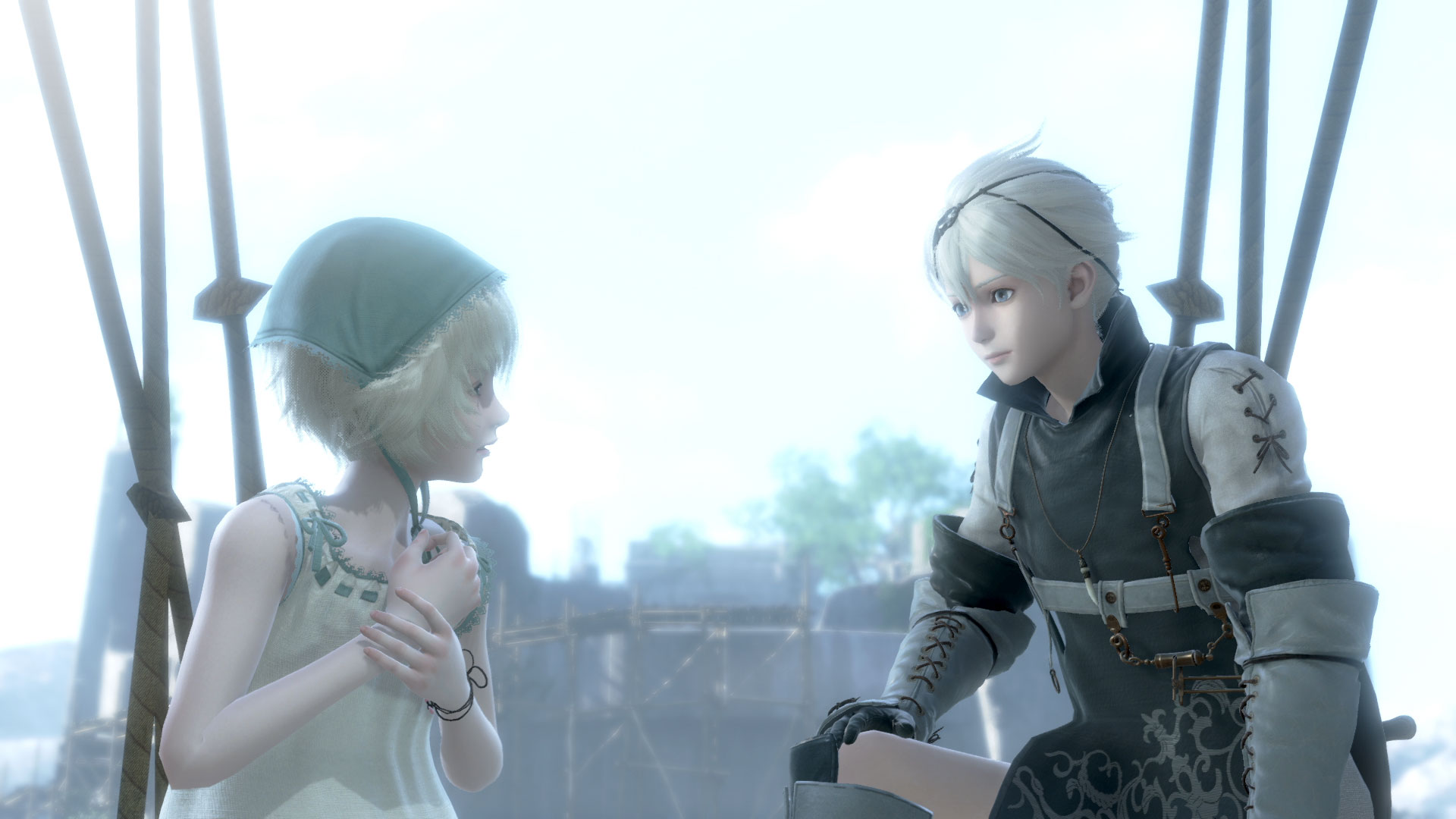
- A fantastic story you won't soon forget
- Heartfelt narrative with themes of identity and acceptance
- Memorable characters with highly quotable lines
Nier Replicant is set a millennium apart from our present day, but the world featured in-game is far from being a futuristic utopia. The world of Nier Replicant is plagued, both figuratively and literally. One of the game’s major threats are the Shades, shadow-like enemies named for their vulnerability to light. The other and arguably more pressing danger is the Black Scrawl, an illness that slowly but surely saps the life from those it infects.
The Black Scrawl is where the protagonist’s (named manually by the player) motive comes into play. His younger sister Yonah suffers from the disease, so he sets out into the dangerous world in order to find a cure. He’s quickly paired up with Grimoire Weiss, a melodramatic talking tome that imbues the protagonist with dark and magical powers.
The relationship between the hero and Weiss is a cornerstone of the game’s excellent writing. Weiss’s initial irritation with the hero’s do-gooder attitude eventually giving way to genuine companionship and understanding, but the book rarely wastes an opportunity to slide in a snarky remark towards one of the other characters, acting as a source of much of Nier Replicant’s genuinely funny sense of humor.
Other characters that fill out the main roster are the delightfully foul-mouthed Kainé, the introverted and enigmatic Emil, and the twin heads of the hero’s village Devola and Popola. The eclectic cast is a major reason why Nier Replicant’s story is so memorable, even all these years later. Most of the original voice actors return to reprise their roles, and they arguably capture their respective characters better than ever before.
While the world of Nier is far from sunshine and rainbows, things do start out rather typically for a game with a fantasy setting. Venturing into the world to find a cure for a deadly disease and defeating shadowy enemies is tried and true fare, but what sets Nier Replicant apart is that there’s something...off about the world.
It’s hard to put a finger on why exactly that is, but that subtle sense of anguish still permeates throughout, even before the story begins to ramp up in the game’s second half.
Clever combat
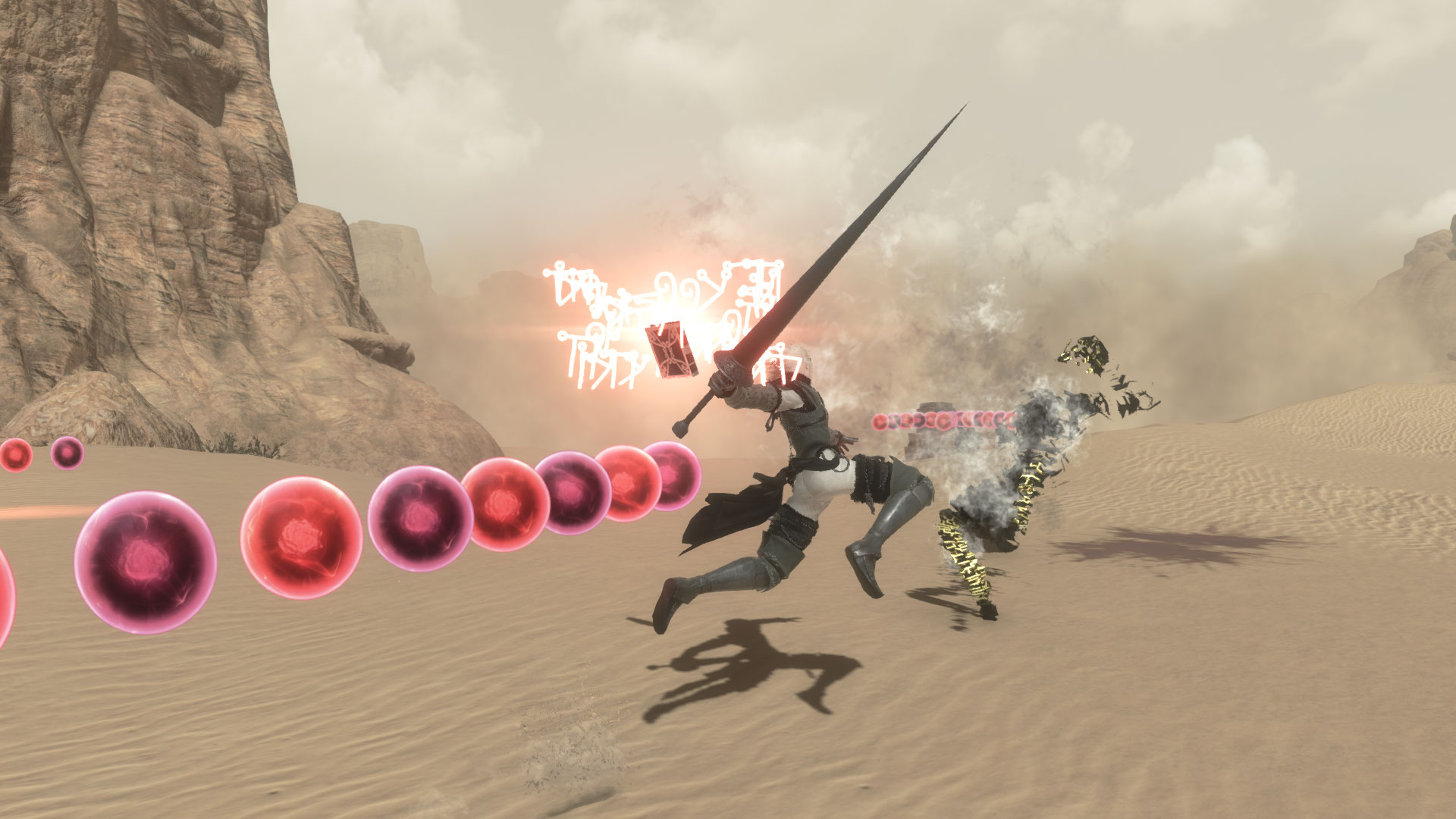
- Faithful, but not to a fault
- Modern design sensibilities injected into combat
- Magic system still a bit rigid
You’ll be doing a lot of fighting in Nier Replicant, and developer Toylogic thankfully decided to make the most of that opportunity. Nier Replicant’s combat system is very simple, but also quite malleable in what the game allows you to do.
The three weapon types all offer unique movesets. One-handed swords don’t pack much punch, but they’re quick and able to stagger enemies reliably, making them a perfect beginner choice. Two-handed swords are unlocked a bit later, and as you’d expect, achieve the opposite of their one-handed counterparts: big damage with slower windups.
Spears are arguably the most interesting, offering a balance in terms of damage and speed, but with an added benefit of a longer range and easily the flashiest moveset from an animation perspective.
No matter which weapon type you choose, combat immediately feels gratifying, and certainly is a lot smoother and more responsive than the 2010 original. While the game’s framerate can throttle during busier combat encounters, it maintains a brisk pace that prevents the vast majority of fights from dragging on too long. Unfortunately, the magic system, while undeniably powerful, is a little more rigid in its implementation.
You can assign four different abilities to the shoulder buttons on your controller, but they share real estate with the infinitely useful guard and evade functions. If you want four spells, then, you need to give up your ability to dodge and block attacks.
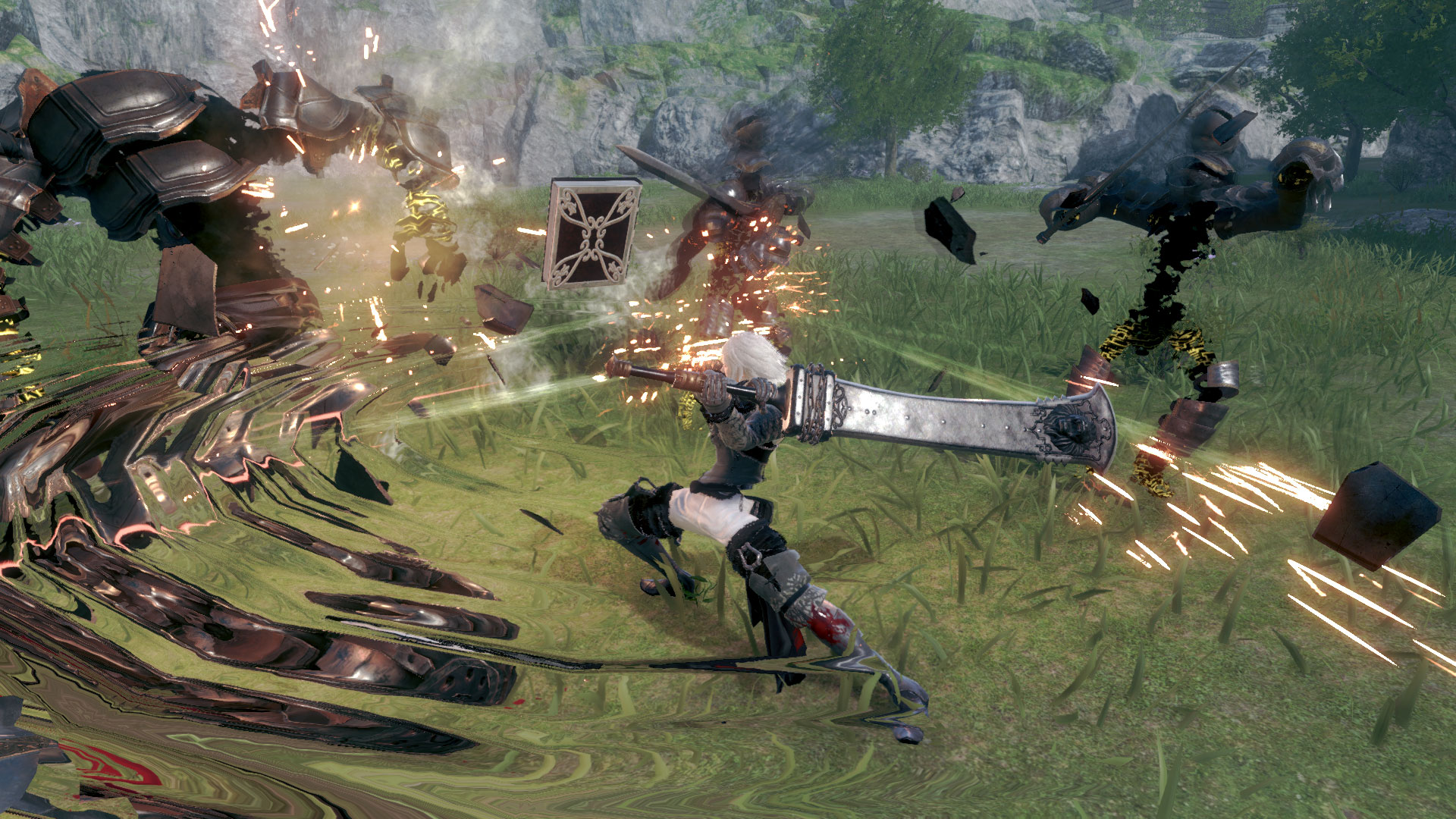
There’s spells that exist to facilitate these losses, but they’re not quite as reliable as the default options. We found it best to stick to two spells as losing the ability to guard and evade increases the difficulty significantly. Maybe one for the challenge run lovers out there.
While the magic system could’ve used some improvements, that’s not to say it isn’t fun to use, though some spells are arguably more useful than others. Dark Lance generates an increasing number of large shards the longer you hold down the assigned button, with the only limit being how much of your magic gauge you have available. Another satisfying ability is Dark Hand, that similarly spawns multiple fists that can be used to slam into opponents from a distance, especially useful against armored foes.
Defeated enemies will occasionally drop Words that can be affixed to your weapons, spells and defensive abilities. These essentially act as buffs, and range from simple attack and magic damage bonuses, to more extravagant additions like poison or paralysis effects. There’s a ton of these Words to discover, and they’re even tied to a completion percentage that makes collecting them an addicting endeavor.
You can let the game optimize your Word choices for you, but the real fun happens when you allow yourself to experiment with Word combinations to really specialize your arsenal, which can really help if you’re struggling on certain boss fights.
Speaking of boss fights, most are remarkably enjoyable, and oddly far more varied in design than what we saw in Nier Automata. There are boss encounters that aren’t just Shade variants, and those are often some of the more memorable encounters. This is especially apparent considering that there’s an unfortunate lack of standard enemy types.
What a wonderful world
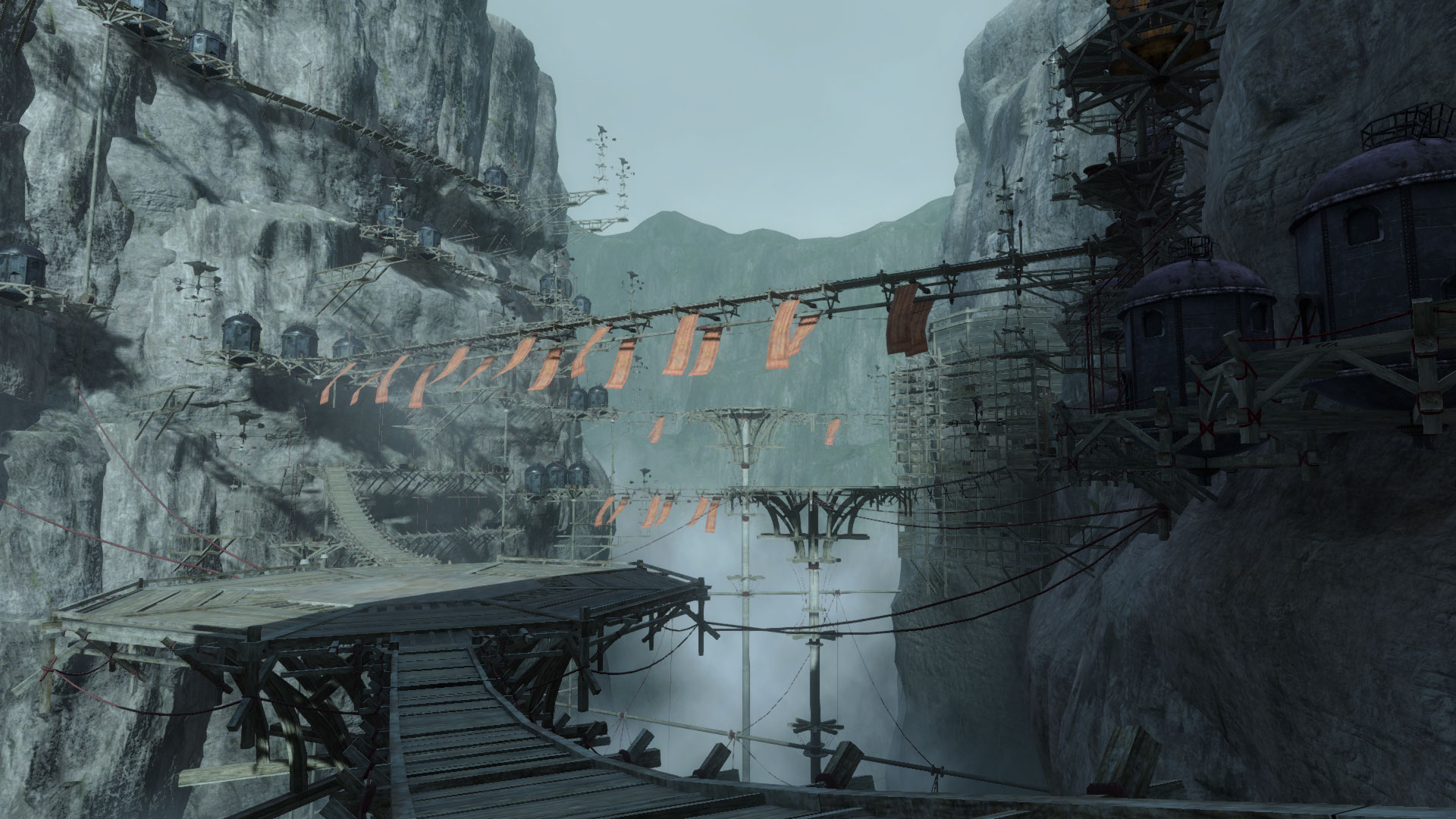
- Creative game world with lots of subtle touches
- Compact world design makes backtracking less of a chore
- Underwhelming side quests can hurt pacing
The world of Nier Replicant isn’t very big, but that’s actually a good thing. The game’s major areas are all connected by simple overworld areas, with the hero’s village situated at the very center.
What’s most impressive about the world of Nier Replicant is the sheer amount of variety packed into such a small world. The mediterranean-inspired town of Seafront to the south couldn’t be further in design from the industrial Junk Heap off to the north. Traveling from one of these locales to the other only takes a few minutes, but the world is smartly segmented so that it doesn’t feel tonally inconsistent.
That’s a relief, then, as you will be seeing the same areas time and again in Nier Replicant, especially if you commit yourself to completing as many side quests as possible. For better or worse, optional side quests add a considerable amount of time to your playthrough.
At their best, Nier’s side quests add a good bit of lore and context (often tragically so) to the world at large. But at their worst, they can boil down to mind-numbing fetch quests with very little payoff besides a predetermined sum of gold.
A significant chunk of Nier Replicant’s side quests boil down to the latter, in which you’ll be tasked with gathering sizable amounts of materials. These can be manageable if you’re not put off by grinding, and you might complete some of them naturally as you progress through different areas. But often the required materials can be rare to the point of thinking you’re doing something wrong.
If you’re a completionist, know that some of these side quests offer weapons as quest rewards. Weapon collection is a requirement if you want to see everything Nier Replicant has to offer storywise, and absolutely worth doing if you want to see every one of Nier Replicant’s multiple endings.
Graphical grimoire
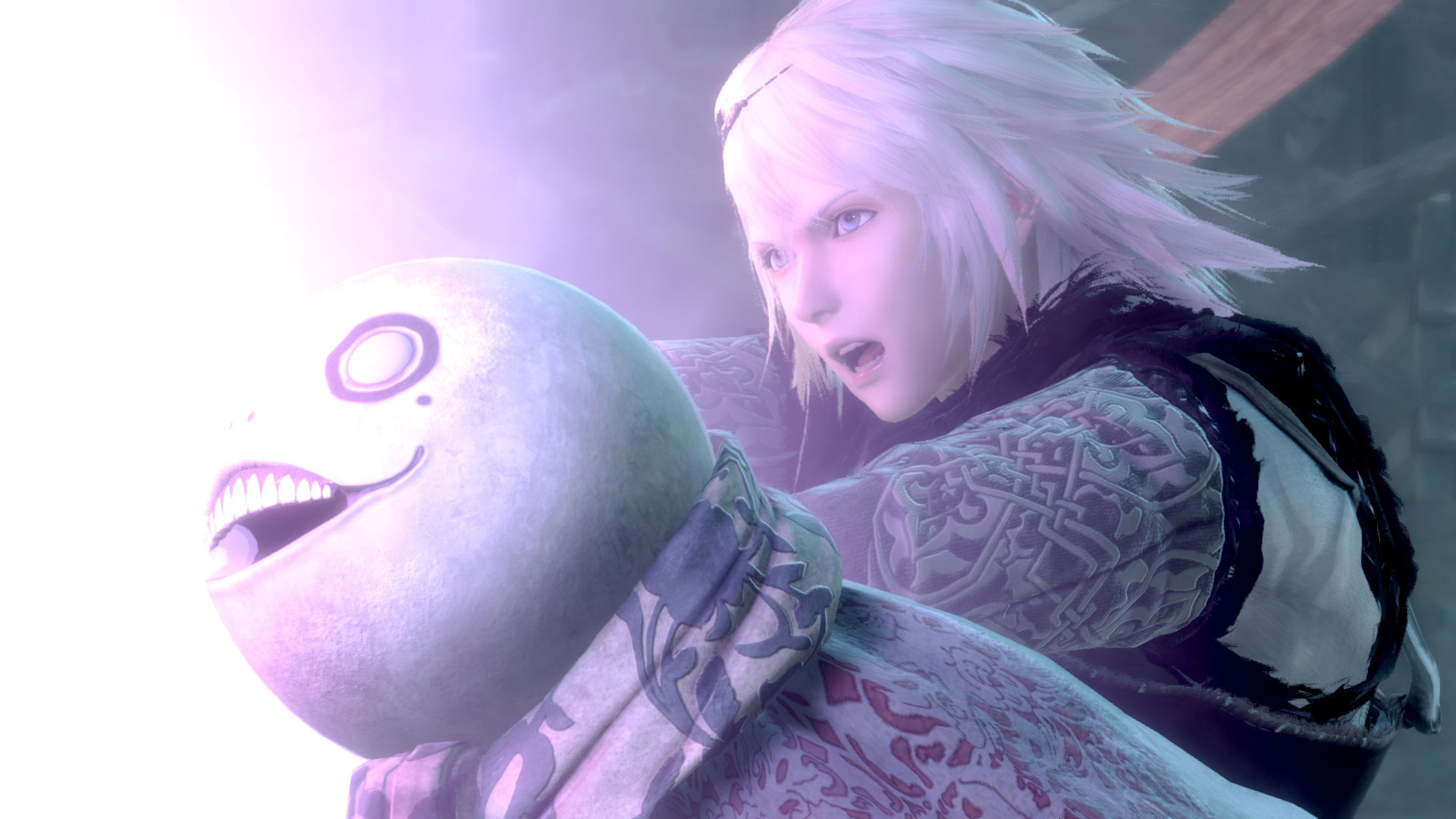
- A smart visual upgrade all-round
- Voice actors return to perfect their characters
- Remastered soundtrack is superb
Nier Replicant’s expansive areas massively benefit from the game’s incredible visual facelift. While Nier Replicant isn’t about to win any awards for its graphics, it's a beautiful game to behold nonetheless. Most areas feature a somewhat bleak color palette, but they’re hardly boring to look at or traverse through. There’s enough color to make each area stand out and still be visually memorable.
The end result, then, is that Nier Replicant manages to look more vibrant than its source material while also maintaining the world’s often subtle sense of bleakness and danger. It’s a testament to the expertise shown by developer Toylogic that they managed to so effortlessly update Nier’s visuals without alienating its original look.
The only qualm we have here is that the remaster could have done with a few more unique NPC models. The same few are recycled ad nauseum, and you’ll easily spot this just by walking down a town’s busier streets. The silver lining is that each major location does have its own set of NPCs that reflect their surroundings which does help to somewhat curb the complaint.
The high quality of Nier Replicant’s visuals also translates to the stellar voice work and phenomenal soundtrack. As mentioned, most of the original Nier’s voice talent returned to their iconic characters in this remaster, providing re-recorded lines that are even better than how they sounded all the way back in 2010.
Nier Replicant’s incredible soundtrack has also seen a refresh. Vocalist Emi Evans created her own chaotic language to add mystifying life to Keiichi Okabe’s soundtrack for both Replicant and Automata, and the refurbished soundtrack here emphasizes that more than ever, and there’s not a single dud on the entire track list.
Verdict

For many, Nier Replicant will be exactly the game they’ve been waiting for. It’s easily one of the highest quality remasters we’ve seen for quite some time, and will definitely appeal to fans familiar with the original 2010 release.
Just as importantly, though, is that Nier Replicant succeeds in matching the quality of Nier Automata in almost every way. The improved visuals, combat and music paired with Yoko Taro’s signature storytelling present an ideal jumping-on point for newcomers to the series, as well as those only familiar with Nier Automata.
The only real standout issue lies in Nier Replicant’s more mundane side quests, then. If some of the longer fetch quests could have been streamlined to maintain the game’s otherwise fantastic pacing, then we could easily recommend it to gamers of all stripes.
As it stands, though Nier Replicant is still a superb remaster that does what it set out to and more. If you’ve been looking at the Nier series and you’re wondering what all the fuss is about, Nier Replicant is well worth your time.
- Nier Replicant perfects the art of the remaster
0 comments:
Post a Comment